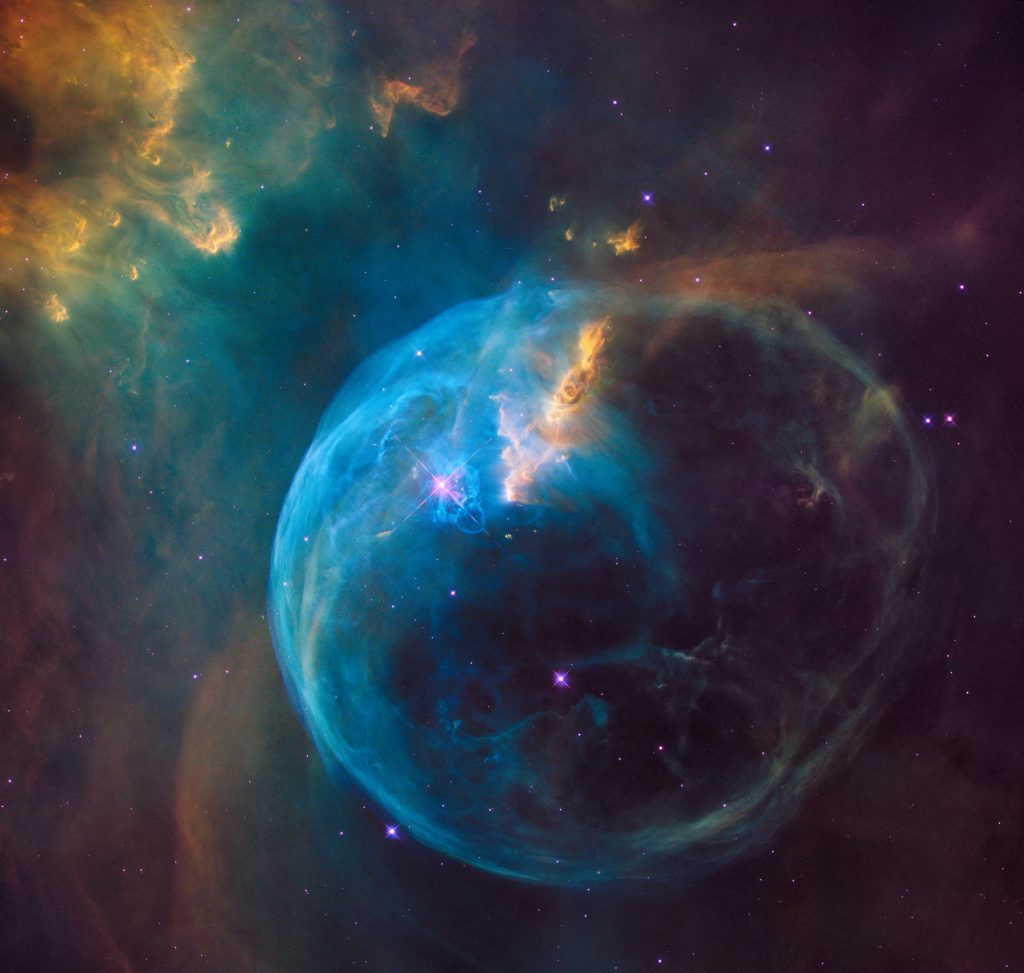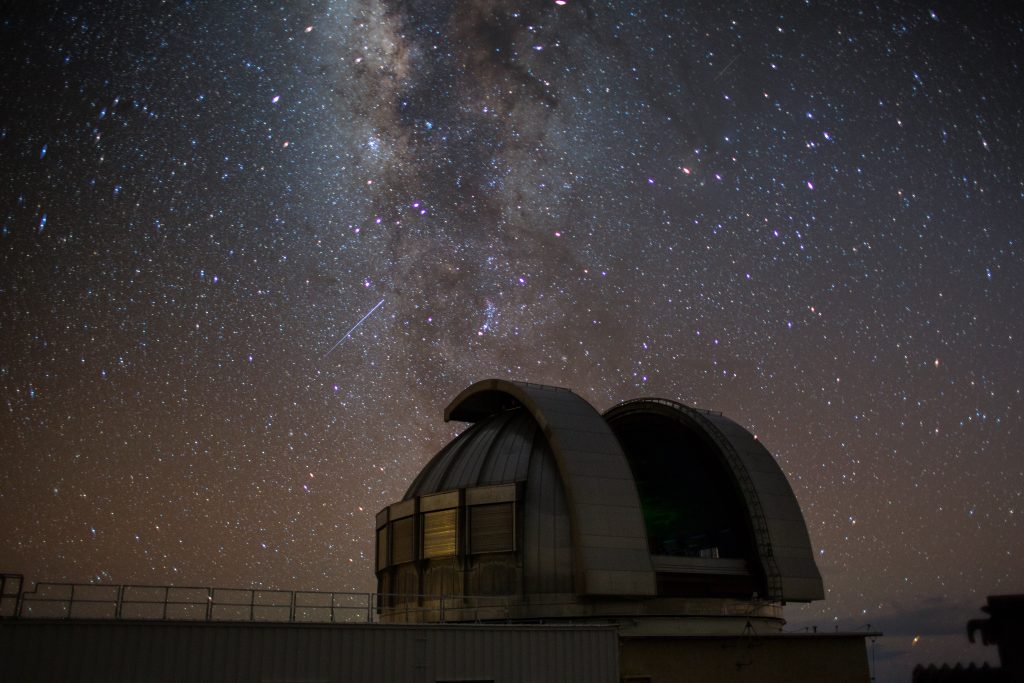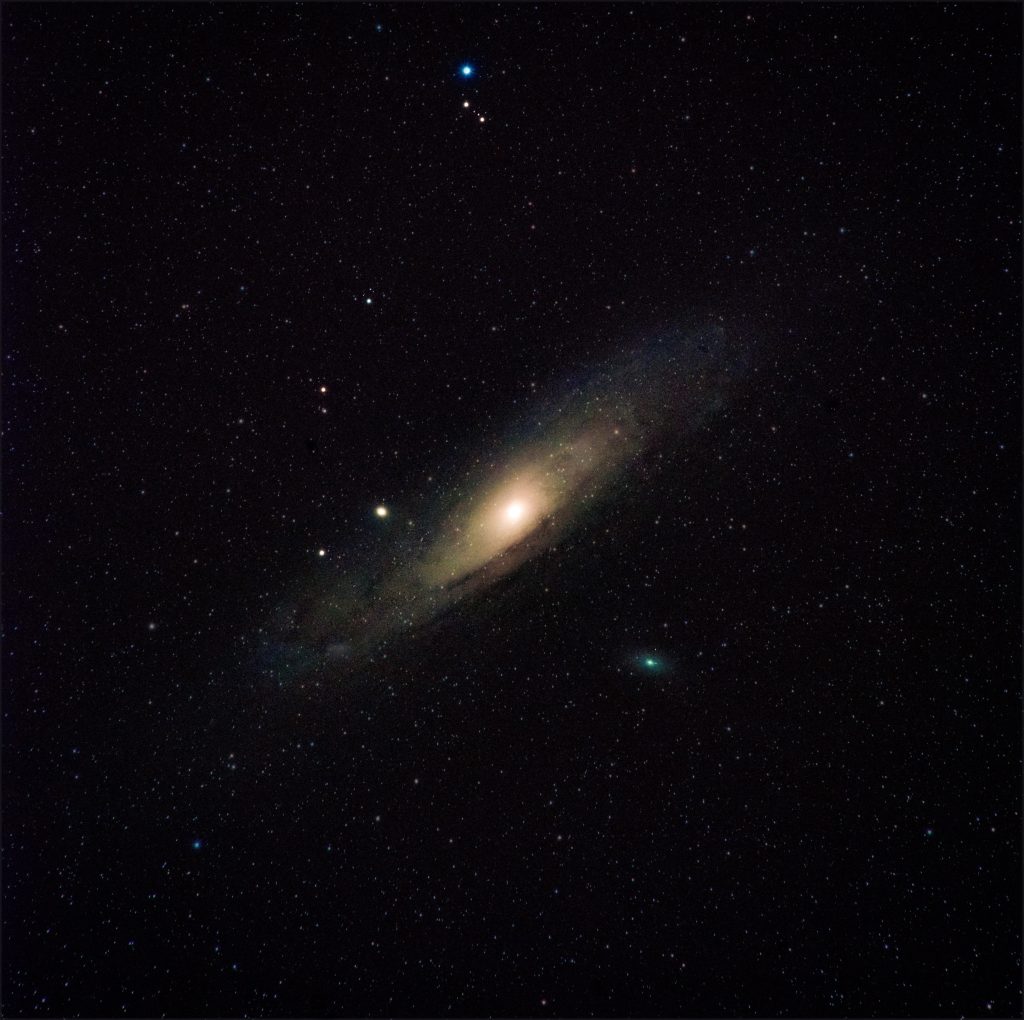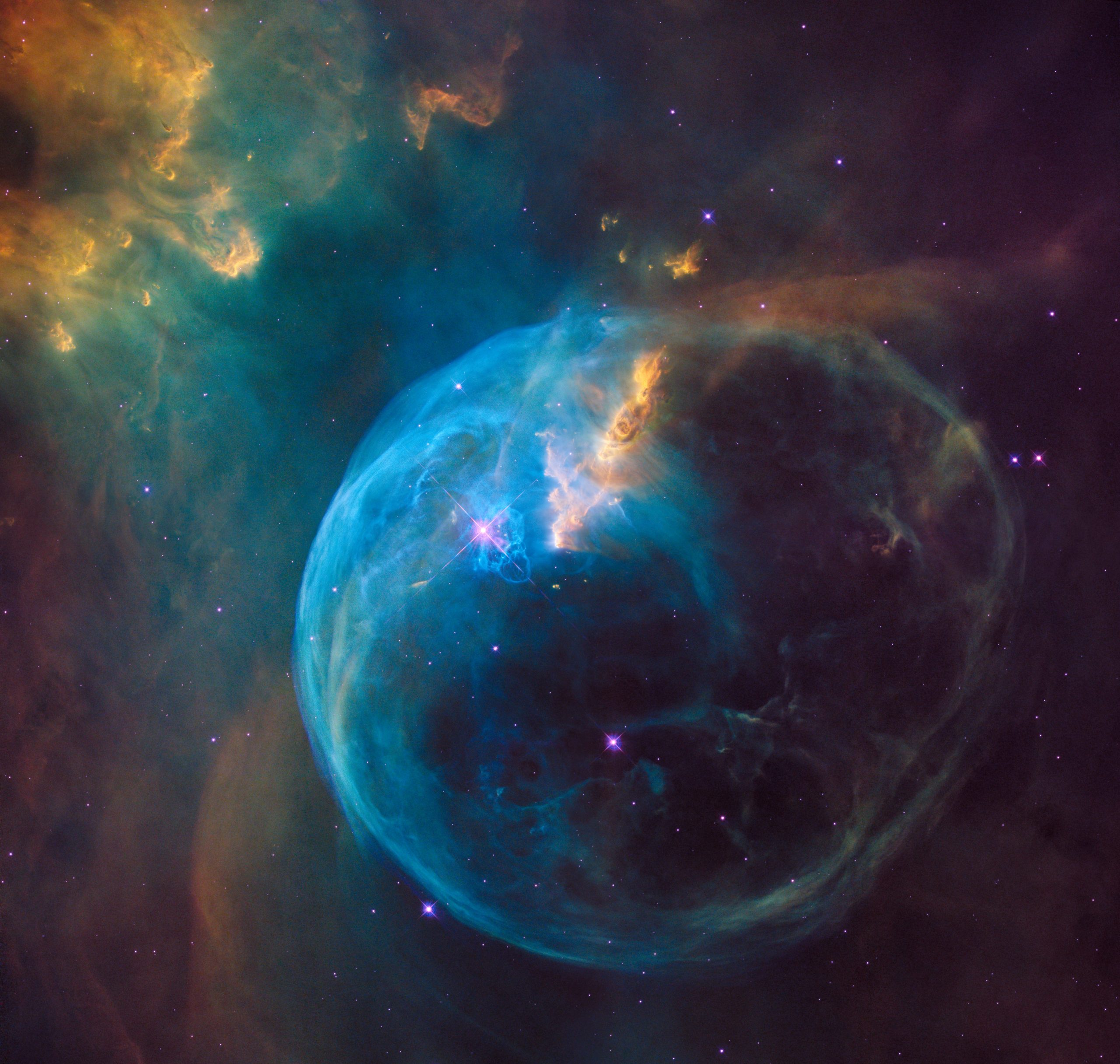To observe the Whirlpool Galaxy with a telescope, you can follow these simple steps. Firstly, make sure your telescope is properly set up and calibrated. Find a location with minimal light pollution, as this will enhance your viewing experience. Next, aim your telescope towards the constellation Ursa Major, where the Whirlpool Galaxy is located. Use a star chart or a stargazing app to assist you in locating the galaxy more accurately.
Now, adjust the focus of your telescope and use different eyepieces to achieve the desired magnification. The Whirlpool Galaxy, also known as Messier 51, is a spiral galaxy with a bright core surrounded by faint outer arms. Take your time to observe the intricate details and try to spot the companion galaxy, NGC 5195, which is interacting with the Whirlpool Galaxy. Experiment with different filters to enhance the contrast and improve your view. Remember to be patient and allow your eyes to adjust to the darkness for a better chance at spotting this marvelous celestial beauty!
Choosing the Right Telescope
When it comes to observing the Whirlpool Galaxy with a telescope, the first step is to choose the right telescope for the job. There are several factors to consider when making this decision. One important factor is the aperture size of the telescope. The aperture size determines the amount of light that the telescope can gather. Generally, telescopes with larger aperture sizes will provide better image quality and allow you to see more details of the Whirlpool Galaxy.
Another factor to evaluate is the focal length of the telescope. The focal length affects the magnification of the telescope, which is important for observing distant objects like galaxies. A longer focal length will result in higher magnification, allowing you to see finer details. However, it is important to consider that higher magnification also means a narrower field of view, so you may have to sacrifice some contextual details in exchange for close-up views.
The mount type of the telescope is another important consideration. There are two main types of mounts: alt-azimuth and equatorial. Alt-azimuth mounts are simpler to use and navigate, making them suitable for beginners. On the other hand, equatorial mounts can track the rotation of the Earth, which is beneficial for longer observation sessions. Consider your level of experience and the type of observation you want to conduct when deciding on the mount type for your telescope.
Lastly, it is crucial to ensure good optical quality. A telescope with high-quality optics will provide sharper and clearer images of the Whirlpool Galaxy, allowing you to appreciate its intricate details. Research and read reviews to find telescopes with good optical quality to enhance your observation experience.
Preparing Your Telescope
Before you can start observing the Whirlpool Galaxy, a few preparation steps are necessary to ensure optimal performance of your telescope. The first step is to set up the telescope in a suitable location. Choose an area away from sources of light pollution, such as streetlights or buildings, to minimize interference and maximize your ability to see celestial objects clearly. A dark and open field will provide the best conditions for observing the Whirlpool Galaxy.
Once your telescope is set up, it is essential to collimate it. Collimation refers to aligning the optical elements of the telescope, such as the mirrors or lenses, to ensure proper focus and image clarity. Many telescopes come with instructions on how to collimate them, or you can find resources online that guide you through the process. Taking the time to collimate your telescope will significantly improve the quality of your observations.
Choosing an appropriate eyepiece is another step in preparing your telescope for observing the Whirlpool Galaxy. Different eyepieces offer different magnifications and fields of view, so experiment with various eyepieces to find the one that gives you the clearest and most satisfying view of the galaxy. Additionally, if you intend to capture images of the Whirlpool Galaxy, consider attaching a camera adapter to your telescope to connect your camera or smartphone for astrophotography purposes.

Finding the Whirlpool Galaxy
To observe the Whirlpool Galaxy effectively, it is important to do some research on its coordinates and position. The Whirlpool Galaxy, also known as Messier 51, is located in the constellation Ursa Major. By familiarizing yourself with the exact location of the Whirlpool Galaxy, you can increase your chances of finding it in the night sky.
A useful tool for locating celestial objects is a star chart or smartphone app. These tools provide maps of the night sky, helping you identify constellations and stars. Before heading out to observe, use a star chart or smartphone app to locate the nearby constellations in Ursa Major. Once you have identified the major stars and constellations, you can then pinpoint the Whirlpool Galaxy’s position relative to these reference points.
Observing Techniques
When observing the Whirlpool Galaxy, there are a few techniques you can employ to enhance your experience. Using high magnification will allow you to observe finer details within the galaxy, such as its spiral arms or individual star clusters. However, it is important to note that high magnification can also reduce the amount of light reaching your eye, potentially making the image dimmer. Experiment with different magnifications to find the balance between detail and brightness that suits your preferences.
Consider using a narrowband filter to enhance the visibility of certain features within the Whirlpool Galaxy. Narrowband filters limit the amount of light from specific wavelengths, such as those emitted by certain gases. This can help reveal specific details, such as nebulae or regions of star formation, that may be less apparent without the filter. However, keep in mind that narrowband filters are not essential, and observing the Whirlpool Galaxy without one can still provide breathtaking views.
To avoid eyestrain and make your observation session more comfortable, it is essential to practice good observing techniques. Take breaks in between observations and look away from the telescope occasionally to rest your eyes. Adjust the telescope’s position to a comfortable height and angle, minimizing strain on your neck and back. By practicing good observing techniques, you can prolong your observation sessions and fully immerse yourself in the beauty of the Whirlpool Galaxy.

Recording Your Observations
Recording your observations is a great way to document and remember your experiences with the Whirlpool Galaxy. Take notes on the appearance of the galaxy, including any notable features or observations. These notes can serve as a reference for future observations or discussions with fellow astronomers.
If you enjoy drawing, consider sketching the Whirlpool Galaxy. Sketching allows you to capture more than just a photograph, as it encourages you to carefully observe and record the galaxy’s details. It can be a creative and rewarding way to express your personal connection with the celestial object.
If you have a camera or smartphone with astrophotography capabilities, consider capturing images or videos of the Whirlpool Galaxy. Experiment with different exposure settings to create stunning visuals that showcase the galaxy’s beauty. Be sure to refer to your telescope’s manual or online resources for guidance on astrophotography techniques specific to your equipment.
Troubleshooting
While observing the Whirlpool Galaxy, you may encounter some common issues that can hinder your viewing experience. Focusing and image clarity are two common areas that may require troubleshooting. If you are having trouble achieving a sharp focus, make sure all the optical elements of your telescope are clean and properly aligned. Adjust the focusing mechanism or try different eyepieces to improve focus.
Light pollution can also pose a challenge, especially if you live in or near a brightly lit city. To minimize the impact of light pollution, try observing from a dark location or using a light pollution filter. These filters can selectively filter out the wavelengths associated with artificial light, allowing you to see celestial objects more clearly.
Weather conditions can also impact the quality of your observations. Cloudy or hazy conditions can obstruct your view, so it is important to choose clear nights for your observation sessions. Keep an eye on weather forecasts and plan your observing nights accordingly to avoid unfavorable conditions.

Additional Tips and Resources
If you are new to astronomy and telescopes, joining an astronomy club or organization can provide valuable guidance and support. These groups often hold regular meetings, workshops, and observing sessions, where you can learn from experienced astronomers and fellow enthusiasts.
Consider attending star parties or astronomy events in your area. Star parties are gatherings of amateur astronomers who gather to observe and share their knowledge and equipment. These events offer an excellent opportunity to meet like-minded individuals, learn from experts, and observe celestial objects such as the Whirlpool Galaxy in a social and supportive environment.
Online forums and websites dedicated to astronomy are also great resources for further information and guidance. These platforms allow you to connect with astronomers from around the world, ask questions, and share your observations. Explore websites, such as astronomy forums or educational websites, to expand your knowledge and stay up-to-date with the latest discoveries and techniques.
Safety Precautions
While observing the Whirlpool Galaxy or any celestial object, it is crucial to prioritize safety. Never look directly at the Sun with your telescope, as this can cause permanent eye damage. Use proper solar filters if you plan to observe the Sun. Always follow the manufacturer’s instructions and recommendations regarding safe usage of your telescope.
Eyestrain can occur when observing for long periods, so it is important to take breaks and allow your eyes to rest. Staring at a bright object, such as a galaxy, for extended periods without breaks can strain your eyes and cause discomfort. Be mindful of your eye health and give yourself regular breaks during observation sessions.
To prevent accidental falls or damage to your telescope, ensure it is securely mounted or placed on a stable surface. Use any provided locking mechanisms or additional supports to avoid the risk of it toppling over. This will not only protect your investment but also reduce the chances of personal injury.
Maintenance and Care
To maintain the performance and longevity of your telescope, regular cleaning is necessary. Cleaning the optics, such as lenses or mirrors, ensures that dust, debris, or fingerprints do not affect image quality. Follow the manufacturer’s instructions and use appropriate cleaning tools, such as lens cleaning solutions and microfiber cloths, to gently clean the optics.
When not in use, it is important to store your telescope in a safe and dry place. Moisture can cause damage to the optics and mechanical components of the telescope, so consider investing in a protective cover or case to shield it from environmental elements. Storing your telescope properly will ensure that it remains in optimal condition and ready for your next observing session.
Periodically checking and adjusting the alignment of your telescope will help maintain its accuracy and performance. Over time, vibrations or accidental bumps may cause misalignment, resulting in compromised image quality. Refer to your telescope’s manual or online resources for instructions on aligning or collimating your specific model, and perform these adjustments as needed.
Conclusion
Observing the Whirlpool Galaxy with a telescope is an exciting and rewarding experience for astronomy enthusiasts. By choosing the right telescope, preparing it properly, and employing effective observing techniques, you can capture the beauty of this stunning celestial object. Remember to record your observations, troubleshoot common issues, and prioritize safety precautions. By immersing yourself in the wonders of the Whirlpool Galaxy, you can deepen your understanding of the universe and cultivate a lifelong passion for astronomy.











